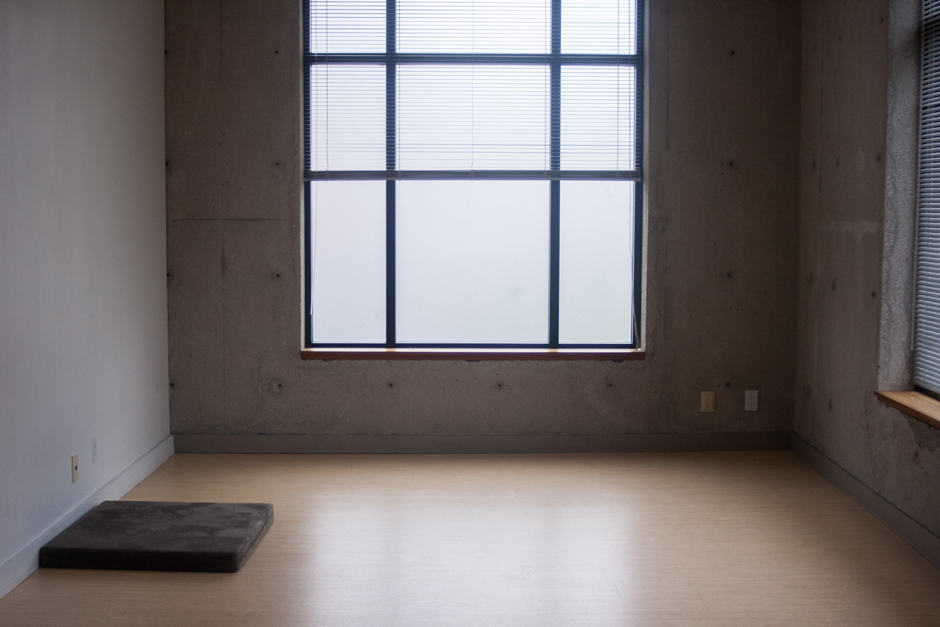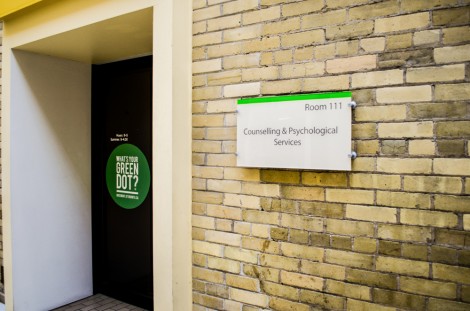Health & Wellness at U of T is bringing mental health to the foreground of student issues, having deemed October “Mental Health Awareness Month” on campus. The campaign highlights the fleet of initiatives targeting what many students have characterized as a lonely and difficult university experience by creating support systems and partnerships to improve student life. Efforts are underway like never before to improve the state of student mental health at U of T through clubs, conversations, and connections.
The “How Does U of T Make You Feel?” project gained a good deal of attention at the end of the spring term of last year. The homemade boards and their sharpie admissions seemed to show up outside every central building at UTSG, and everywhere they appeared, so did a group of students — some reading the comments, some writing their own, and some standing back to talk about it with others.
The boards, and the sentiments that students expressed on them, were both unignorable and widespread. Through both the physical boards and the Facebook page, the project made more prominent the extent to which students were struggling. “I think one of the reasons why it was an interesting page to so many people was because people go to see that ‘oh yeah, other people feel the way I feel,’” said David Fishbayn, one of the creators of the project.
Fishbayn noticed a climate of disconnection between students on campus where students are generally uncomfortable communicating with each other. “There were a lot of patterns in the responses; there were a lot of people who were lonely, who were socially isolated, and just frustrated with their university experience,” he said. Initiatives that prompt conversation can make big differences in bridging what might otherwise feel like impossibly wide gulfs.
The sense of alienation that some students experience, and which contributes to an unhealthy as well as isolating time in university, is a combination of the general atmosphere of universities as institutions, as well as issues specific to the University of Toronto.
A FRACTURED COMMUNITY
Kaleem Hawa, the only undergraduate student representative on the Vice-Provost’s Mental Health Committee, expressed a similar concern. The vice-provost’s committee determined that the structure of the university is a contributing factor in its overall poor performance in looking after students’ mental health. This critical exploration of the causes of an unhealthy campus environment is welcome. For the most part, the tendency to attribute all of U of T’s problems to its immense size has become a hindrance to more constructive investigations into improving student experiences.
“If we’re going to sort of as a collective group improve the sense of alienation at U of T, we need to go farther than ‘oh U of T is super big, that’s why so many people feel alienated,’” said Fishbayn.
The main structural concern is what has been described as a “siloed” system at play. Janine Robb, director of Health & Wellness, pointed out the stark contrast between the high level of decentralization of the university in terms of social and organizational structure, and the highly centralized nature of mental health services.
On the vice-provost’s committee, she emphasized the importance of developing a more decentralized mental health system that featured services embedded in the different “silos” of U of T life. Robb argued that embedded services reduce the stigma associated with seeking out and walking into a central forum, such as Counseling and Psychological Services (CAPS).
The same loneliness that Fishbayn identified at U of T has been enhanced and exacerbated by this layout, both institutionally, in terms of college and faculty divisions, and physically, in terms of the lack of social space.
“I don’t think we have a cohesive social community,” said Hawa, describing the image of silos. “You have the colleges, each one of those is a silo; people hang around with their various student clubs, those are silos. Those sorts of silos are both good and bad, but I think that when it comes to mental health they are largely bad, because it makes it harder and more stigmatizing to access [resources] if we use a centralized service.”
This stigma surrounding conversation about and access to mental health resources is what those concerned with improving overall social and psychological well being identify as a chief obstacle.
BREAKING DOWN STIGMA
MindFest, a full-day event of mental health workshops, talks, and activities hosted by the Department of Psychiatry and held at Hart House, is directed at the improvement of student health through reduction of stigma. Lindsay Curtis, one of the organizers of MindFest and a faculty member at the department, commented that much of the impetus behind the event is to improve conversation about mental health among students.
The exhibitions at MindFest range from more formal speakers from established organizations, like the Jack Project, to more personalized experiences — yoga workshops, poetry prescriptions, craft-making, and guided meditations — that connect individuals to each other and to the resources present at U of T. The event kicks off Mental Illness Awareness Week on campus and will be running from 9:00 am to 8:45 pm on Monday, October 6.
Ronna Bloom, poet in residence at Mount Sinai Hospital, will be representing the Rx for Poetry program at MindFest. Through the program, Bloom delivers poems to individuals at random. The idea was born from what Bloom describes as, “seeing what poetry can do for people even in brief, unplanned encounters.”
She described the experience of offering poems to others as an opportunity to connect and offer sympathy, “I have certainly felt that when in despair or grief, if I can land on the right poem it may make me cry as it releases the experience I’ve been holding in, but it also releases it. And I am less alone because I know the person who wrote this felt this too.” For Bloom, prescribing a poem to others — which she delivers on a prescription pad — is a way to combat feelings of isolation through an extension of care. Programs like Bloom’s, through expressions of solidarity, go a long way towards breaking down the stigma associated with mental health.
As Curtis explained, “Stigma is the biggest issue facing many people experiencing mental illness,” she added that stigma also reduces the effectiveness of services. Even in a city as big as Toronto, and a university as big as U of T, people often are unaware of the services available to them.
Curtis remarked that there were a lot of students involved in the planning of MindFest, particularly those affiliated with the department of psychiatry. She praised student initiatives on campus as increasing the access that students have to more comfortable conversations about mental health. “They’re doing amazing things,” she said. “Increasing communication is essential to decreasing the stigma.”
Active Minds, a club dedicated to eradicating stigma associated with mental illness, is dedicated to doing just that. Jordana Schiralli, vice-president of Active Minds, found the club instrumental in developing the kind of support network that she believes students dealing with mental illnesses need. On Thursday, October 16 from 6:00–9:00 pm, Active Minds will be hosting a “Speak Out! Students Talk Mental Health” event in BA1170 in an effort to provide comfortable and casual access points for people to engage with others facing similar issues.
Schiralli agreed with Curtis’ assessment: “It is crucial to note that CAPS is doing the best they can with the resources they have. The issue is that many students are unaware of other services on campus that they also have access to.”
IMPROVING ACCESSIBILITY
Schiralli referred to Counseline, a free service provided by CAPS where graduate students in the faculty of social work counsel undergraduate students — in place of formally trained psychiatrists who are in high demand and short supply. Services like this, where students are engaging more directly with each other, are noteworthy in their accessibility. “They provide online counseling, which allows commuters the option to receive care without travelling,” she commented, “and those experiencing symptoms of social anxiety or depression to receive care from the comfort of their own home.”
The issue of commuter access is particularly important. For the majority of commuters at U of T, campus can be a lonely environment; there are few student spaces that encourage interaction and conversation, and even fewer explicitly dedicated to commuters.
Fishbayn is hoping that student projects can help propel conversation. A new group, Unite U of T, an extension of the How Does U of T Make You Feel? project, is focused on teaming up with other mental health organizations on campus and developing a dedicated “social week” to consciously foster community at U of T. He believes that it’s fallen largely to the student body to correct the issue of alienation on campus: “It’s a lot more structural; that’s why it sort of has to come upon the individual student here to find some way of resolving their social problems.”
Aside from the number of clubs concerned directly with facilitating discussion and community around issues of mental health, dedicated advocacy work is being done by students to bridge the gap between what people are experiencing and what the administration is working on. An advocacy organization made up solely of students from various student societies, the Mental Health Action Team (MHAT), was founded by Hawa and Yolen Bollo-Kamara, University of Toronto Students’ Union (UTSU) president, in order to represent the views of a diversity of students on issues of mental health and stigmatization on campus. Bollo-Kamara emphasized that, “counseling staff and the services they provide should be representative of the diversity of our community and be able to speak to [a variety] of issues.” She highlighted issues including tuition fees, class sizes, racism, sexism, and homophobia, among others.
Made up of representatives from a variety of divisional societies on campus, the MHAT is interested in voicing a plurality of viewpoints, as no two individuals experience mental illness the same way. Bollo-Kamara has identified this as a key equity issue, and stresses that catering and targeting services to groups in particular need is a priority of this organization. “Addressing student mental health is an important part of the UTSU’s mandate to defend student rights and eradicate barriers to inclusion and success in all aspects of university life,” said Bollo-Kamara.
MHAT’s first project has been to commission a survey on mental health at U of T, involving meetings with psychiatrists, Robb, and the assistant vice-president of student life Lucy Fromowitz. “It will get emailed out to students to fill out their perceptions and experiences with mental health, to inform our advocacy,” said Hawa. “After that the goal is to draft a report, a report that will go to the provost and the Provost Committee, and that should help them inform their formation of strategies.”
The provostial committee will be producing a mental health framework, containing some core principles on which to base policies for U of T within the next two months. From there, the focus will shift to developing strategies of action that translate into concrete policies.
According to Hawa, these policies can be wide-ranging as well as more immediately achievable. The need to shift towards more embedded services might require larger direction of funds. “The implementation plan might be to spend more money on having counselors, psychologists, and psychiatrists in the respective communities rather than having them all in CAPS,” he commented. “Have one in the dean’s office at [Victoria College], some in the dean’s office at [University College], some in the First Nations house.”
On the other hand, simple measures to decrease stress and increase awareness of services can result in significant improvements in overall student wellbeing. One example both Hawa and Schiralli identified was a simple change to syllabi. “Something I have noticed more recently at U of T is the amount of professors now including resources like CAPS in this section of the syllabus,” said Schiralli. “Adding this small piece of information next to physical illness is huge; it helps to legitimize the concerns of individual students, and it legitimizes the mental health movement as a whole.”
The reduction of stigma is at the forefront of everyone’s minds heading into Mental Health Awareness Month. Other organizations on campus, even those not specifically oriented towards mental health and overcoming psychological and social ills on campus, have stepped forward to participate, including the Multi-Faith Centre with yoga and tai chi classes, various faculties with meditation sessions, and Hart House craft workshops.
Although increased attention is important, some involved students worry that we should be conscious of the issues at hand. Hawa argued that widespread attention is good in that it decreases stigma, but it can also create support for ineffective solutions and gloss over the things that people may more seriously need to properly treat mental illness.
With that being said, both Hawa and Fishbayn made a point of calling on other student groups to add to the discussion. “I think in terms of the culture actually changing, of individual students seeing that other people really do feel the same way as they do, that has to be accomplished more by …initiatives [and] clubs on campus, because those are the groups that can more actively interact with individual students,” Fishbayn commented. “It is important for students to understand that they’re not alone in their frustration with their university experience.”




